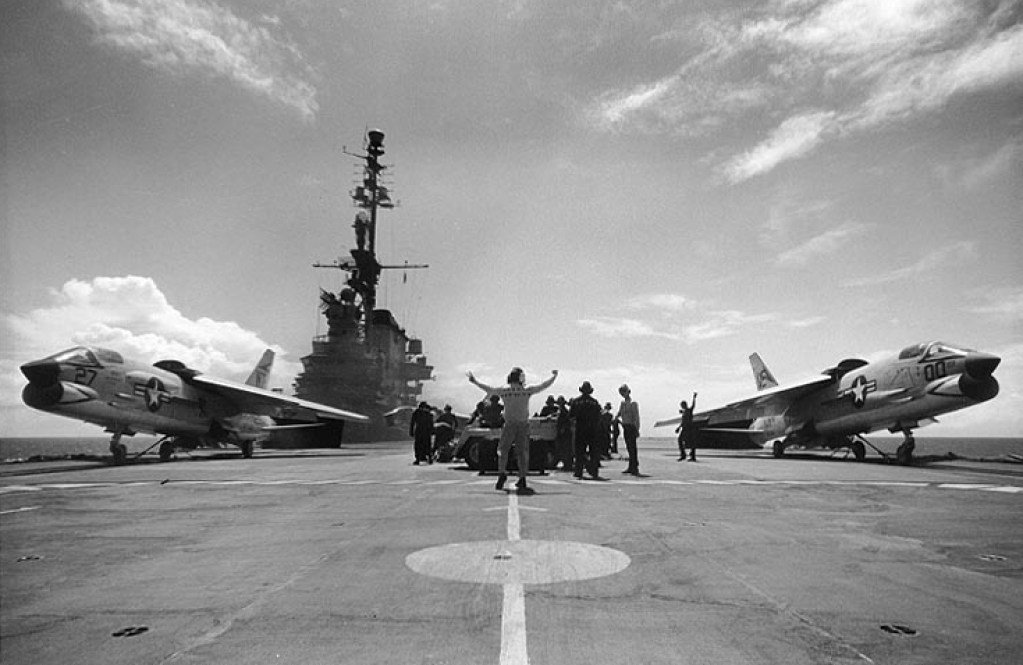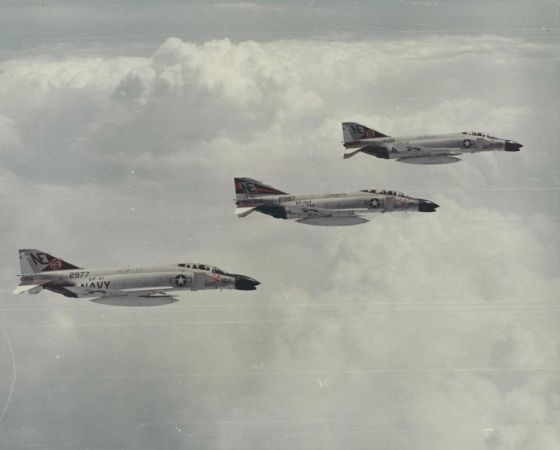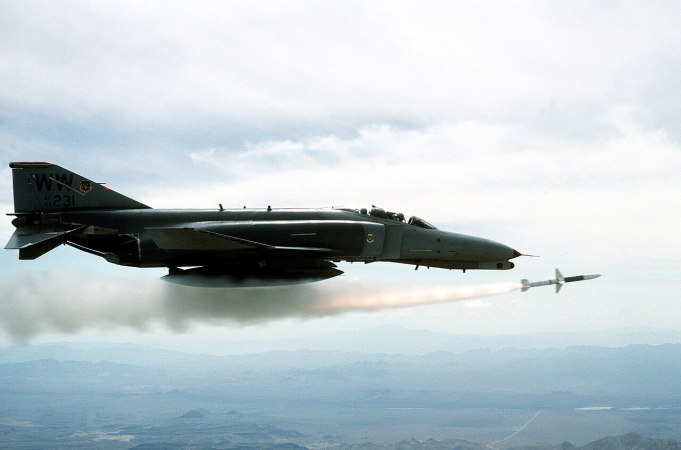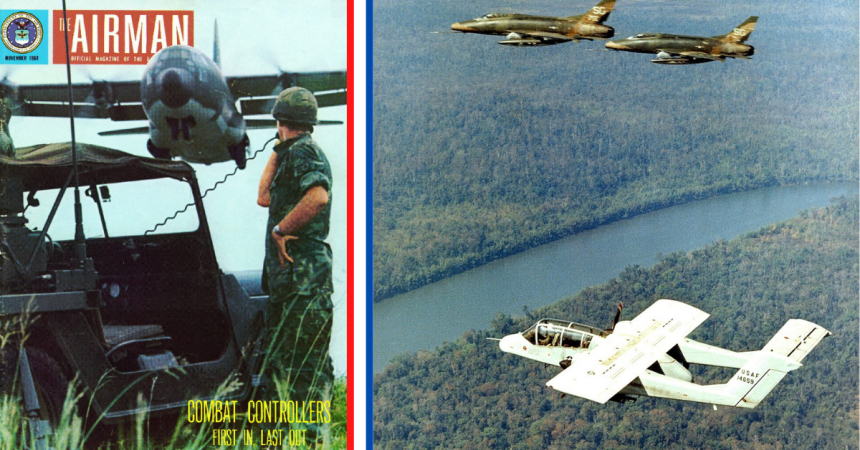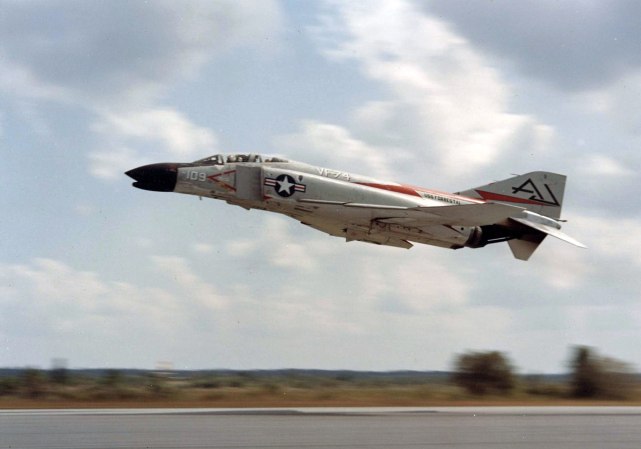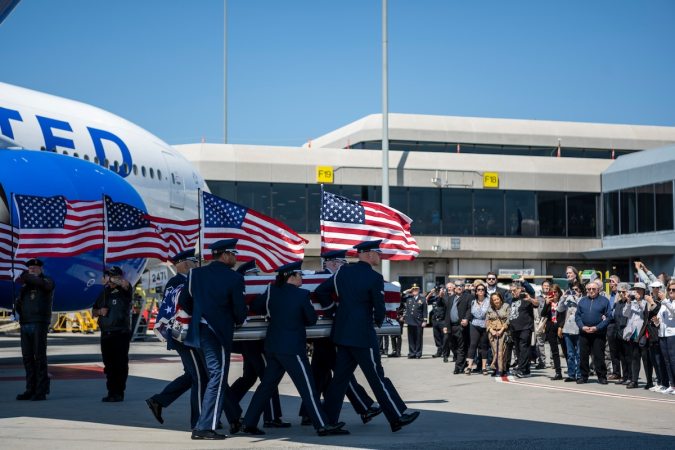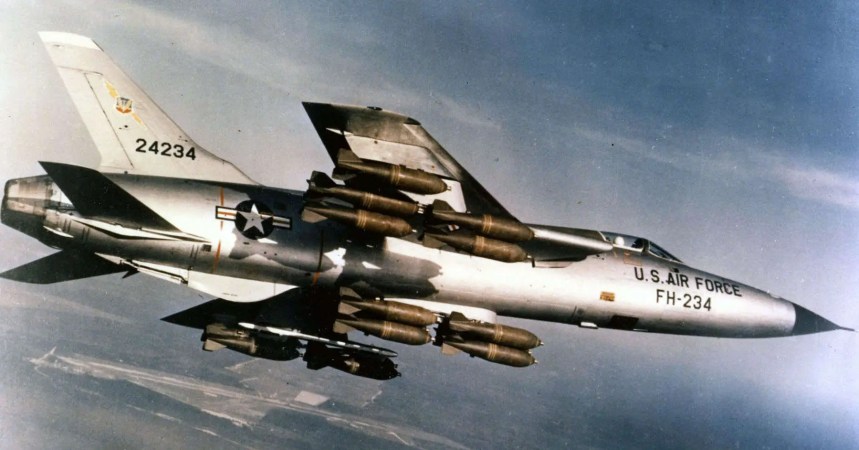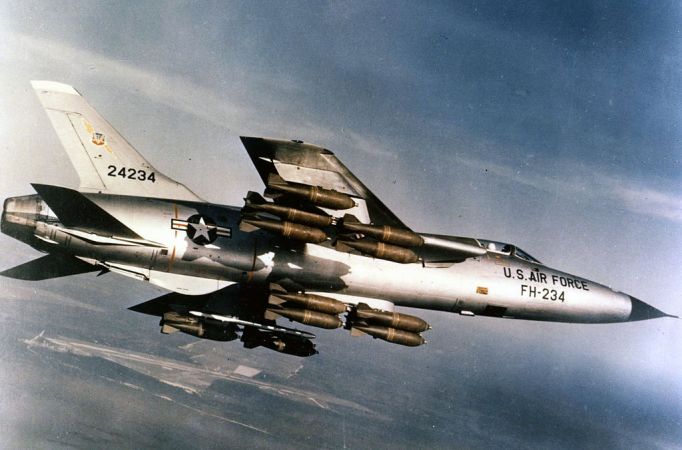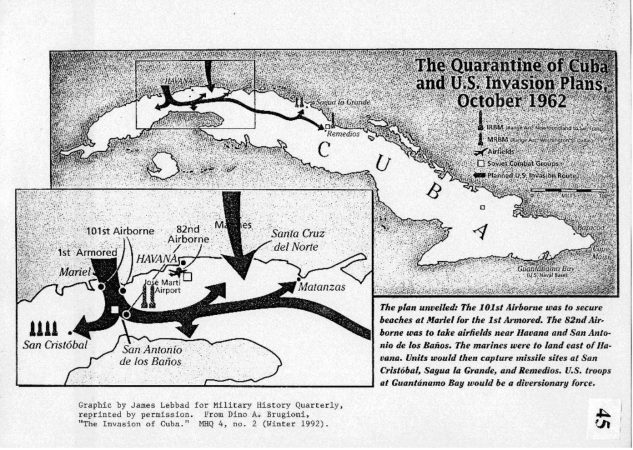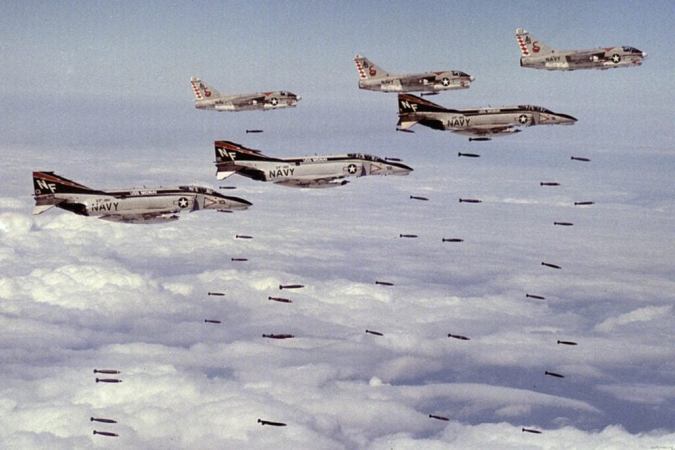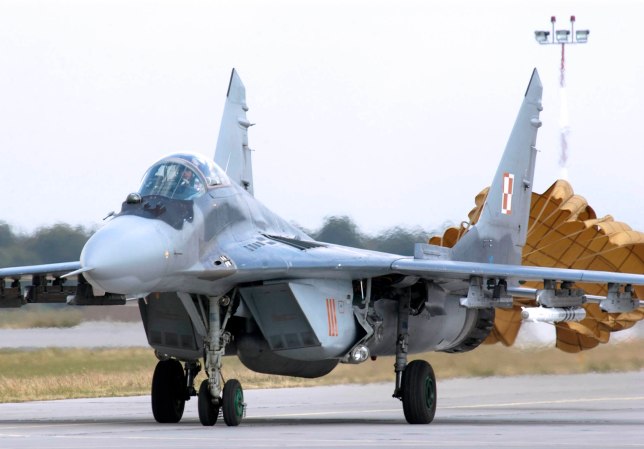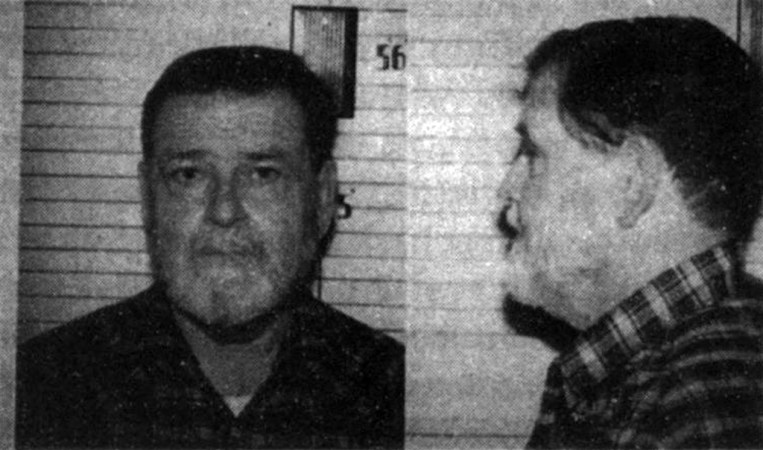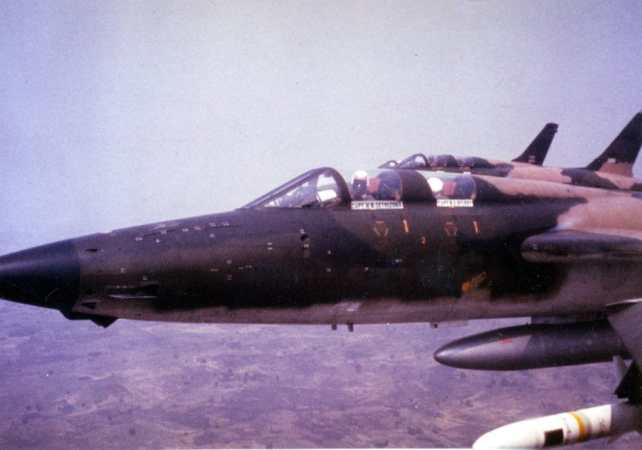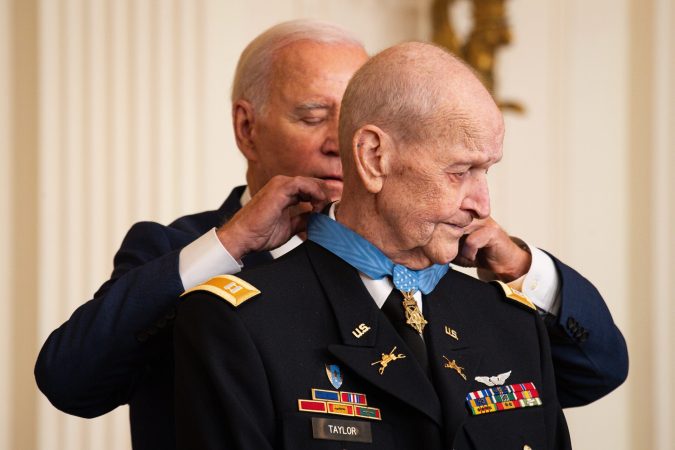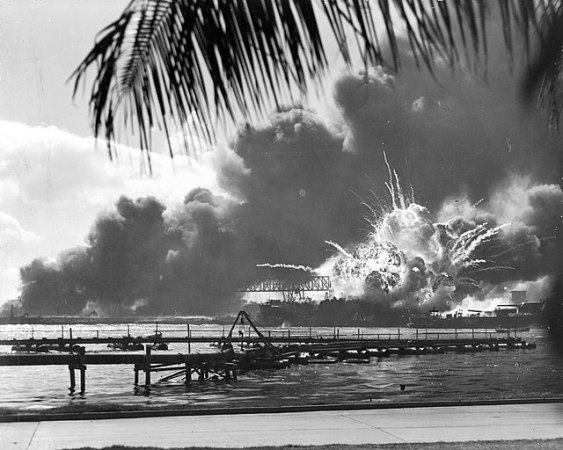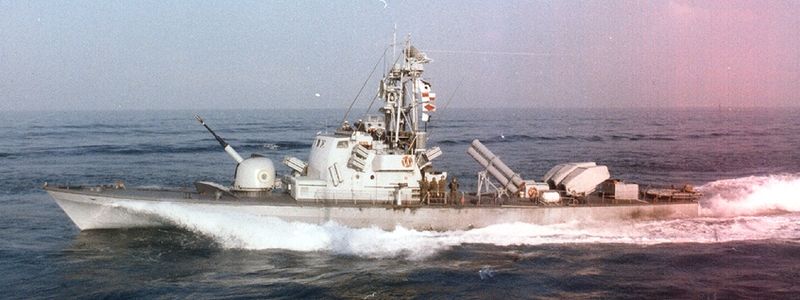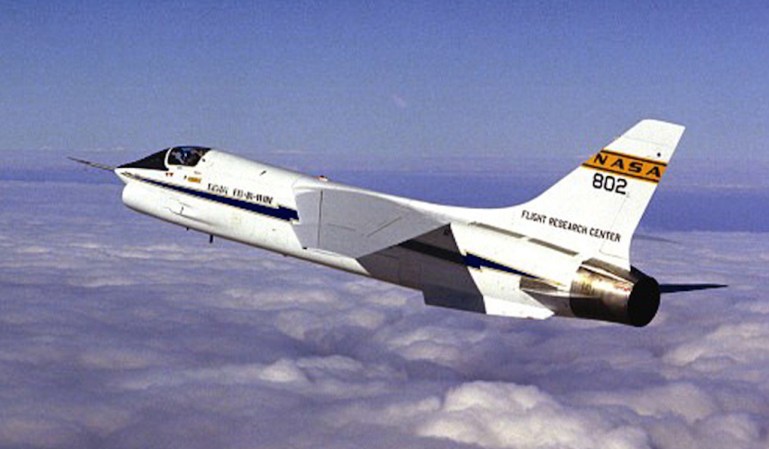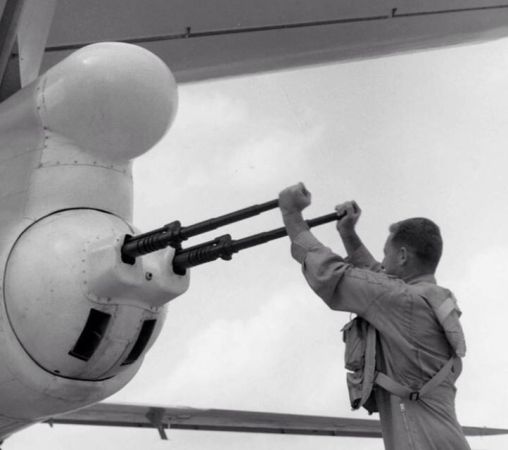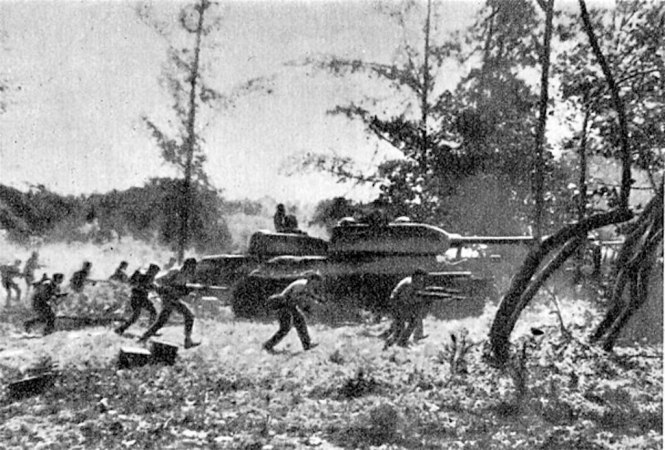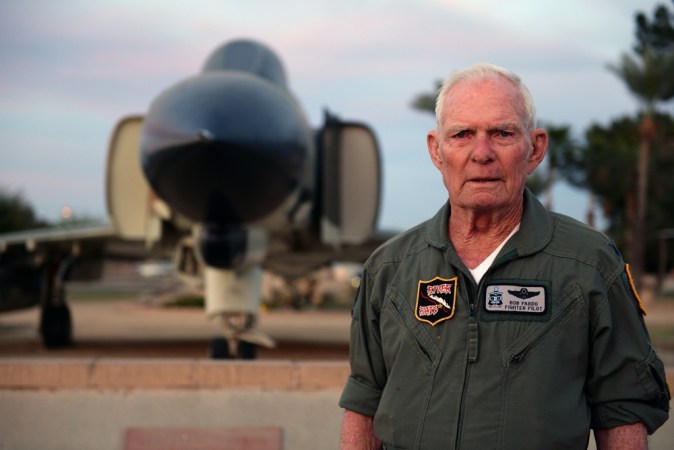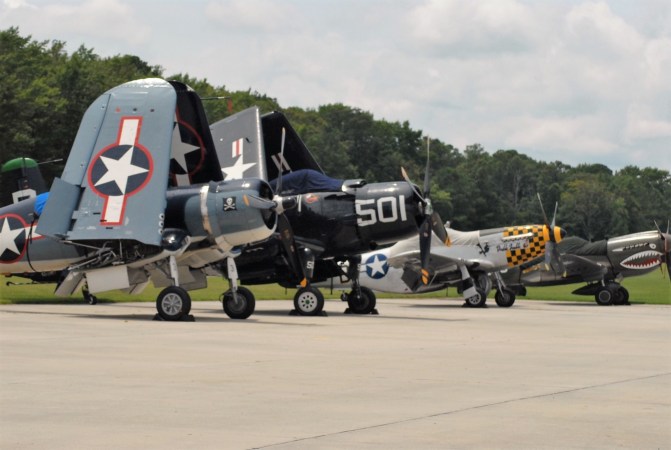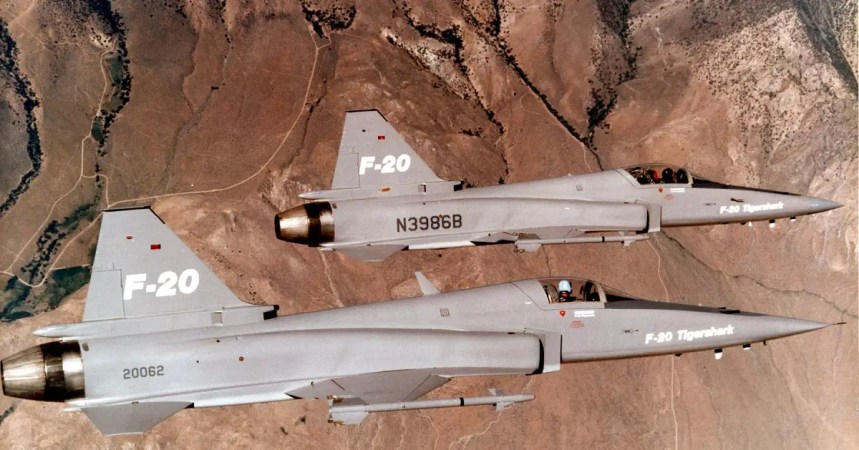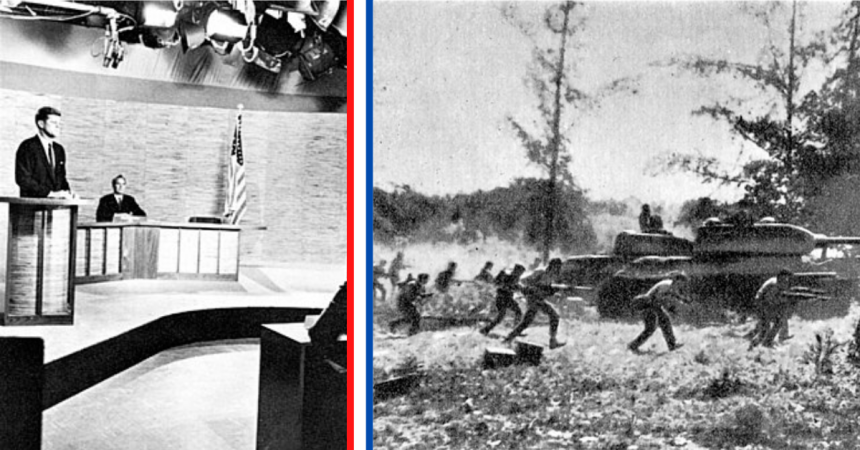The Chance-Vought F-8 Crusader was the U.S. Navy’s premier single-engine jet air superiority fighter from 1957 to 1976. The aircraft had a unique design feature, a variable-incidence wing, which could be raised to increase the angle of attack, which enabled the sleek Crusader to get additional life for takeoff and use a lower airspeed for carrier landings. The later F-14 Tomcat design incorporated variable geometry “swing wing” capability to achieve the same purposes.
It was the last U.S. aircraft to rely on its internally mounted guns as its primary weapons, although it could carry two AIM-9 Sidewinder guided missiles mounted in cheek pylons and used those with good effect in the Vietnam War.
The F-8 began breaking speed records as soon as it was ready for production. Commander Robert W. Windsor established a national speed record on August 21st, 1956, by reaching 1,015.428 mph over a 15-kilometer course with a standard F-8. This made the Crusader the first operational jet aircraft to fly faster than 1,000 mph. Then on July 16, 1957, future “Mercury Seven” astronaut and U.S. Senator, Marine Corps Major John H. Glenn, Jr., flew an RF-8 photo reconnaissance version of the F8 in a record transcontinental flight, from Los Alamitos, California to Floyd Bennett Field, New York, in 3 hours, 22 minutes, and 50.05 seconds.

The F-8s were placed in service with the Navy, limited to operating from Essex-class aircraft carriers, and the Marines. Ironically, the first Crusader combat missions were RF-8 photo reconnaissance flights over Cuba during the Cuban Missile Crisis in October 1962. The Kennedy administration needed positive proof that Soviet Russia was working to place operational missiles with nuclear warheads in Cuba, a direct threat to most of the East Coast and a large swath of the Midwest United States. These flights began on October 23, 1962, with RF-8s flying from Key West, Florida to Cuba and then back to their home station in Jacksonville, Florida, for photo processing. The intelligence collected during these flights confirmed the presence of Soviet Russian nuclear-capable missiles close to operational status in Cuba and were dramatically displayed to an open emergency session of the United Nations by then Secretary of State Adlai Stevenson, publicly confronting the Soviet delegation on live television, a novelty at the time. The flights continued for six weeks and recorded over 160,000 photographs. The 2000 movie “Thirteen Days,” a dramatization of the Cuban Missile Crisis inside the Kennedy White House, has a realistic depiction of one of these high-threat, high-speed, low-level RF-8 missions.
The Navy and Marine pilots who flew these missions were awarded the Distinguished Flying Cross, many receiving them from President Kennedy at a White House ceremony. Both squadrons conducting the vitals series of reconnaissance flights received unit citations. In the war that never ends between the U.S. Air Force and naval aviation, the RF-8s were selected for these critical missions over a unit of Air Force RF-101 Voodoo aircraft, also based in Florida, due to better cameras and greater reliability, much to the consternation of then Air Force Chief of Staff, General Curtis Lemay.
During the Vietnam War, aircraft were used by both the Navy, operating off aircraft carriers, and the U.S. Marines from airfields in South Vietnam.

Like the ground war in the jungles below, the air war in Vietnam was far from conventional. The (North) Vietnam People’s Air Force was reluctant to take the U.S. Air Force head-on. From the start of the war, its main tactic was to lure U.S. fighter aircraft away from any bombers and into a Mig or ground antiaircraft trap. When Vietnam started receiving effective radar-controlled Surface to Air Missiles. (SAMs), they added those to their air defense mix. When F-8s did encounter Migs, they enjoyed good success, downing 19 North Vietnamese Mig 17 and Mig 21 aircraft for a 19:3 kill ratio. Unfortunately, there were too few Crusaders to go around, and they needed to operate off of aircraft carriers due to their limited range. The F-8 Crusader fleet basically began to “age out” from intense use during Vietnam.
The follow-on to the Crusader, the F-4 Phantom, used by both the U.S. Navy and Air Force during Vietnam, lacked an internal gun, and many opportunities to down North Vietnamese aircraft were missed for lack of a gun, due to the low-reliability rate of their air-to-air missiles.
The last F-8s were retired from active-duty squadrons in 1976, and the RF-8 photo-reconnaissance aircraft came off of active duty in 1982, and the Naval Reserve until 1987. Overseas, the French Navy operated F-8s off of their aircraft carriers from 1964 to 2000, and F-8s served in the Philippine Air Force from 1977 through 1991.


